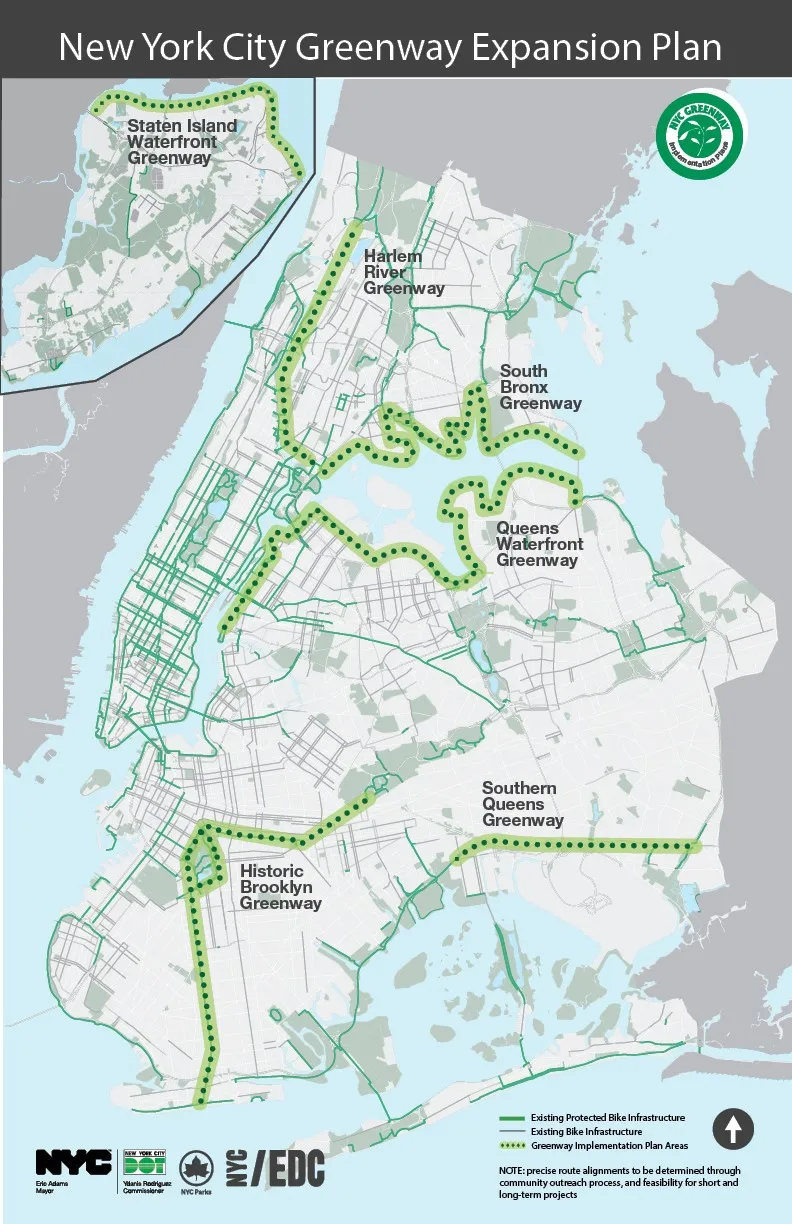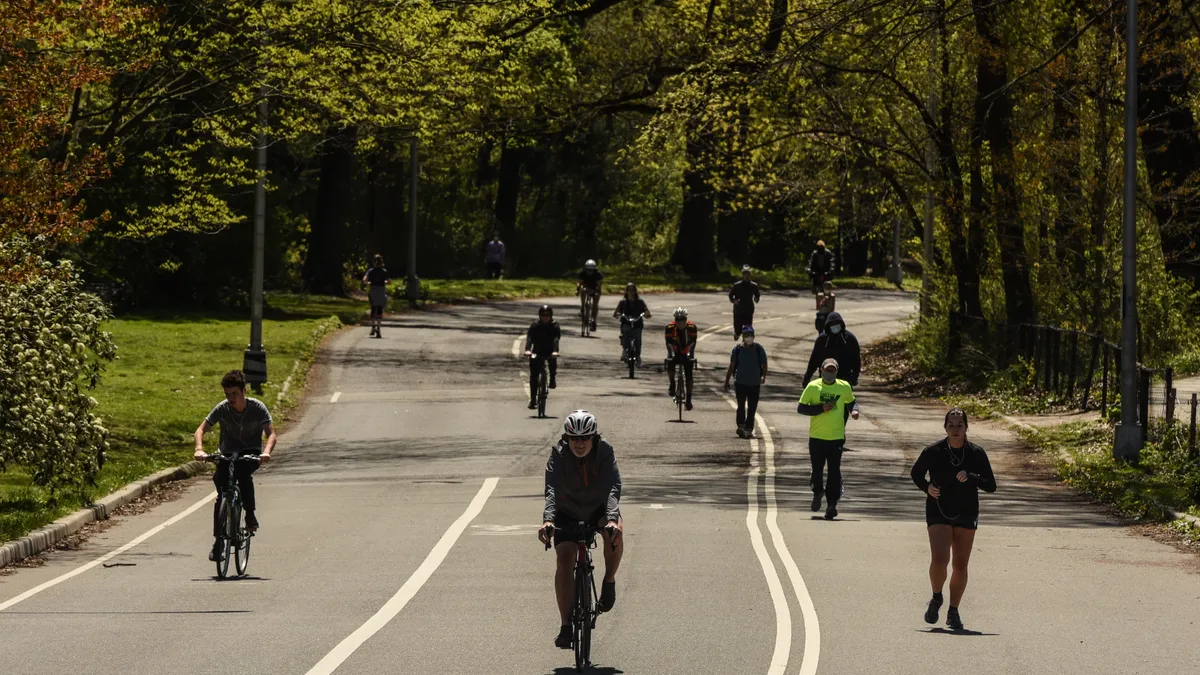Dive Brief:
- New York City plans to build 60 miles of greenway corridors that will include more than 40 miles of new protected bike lanes in the city, according to an Oct. 12 announcement.
- Buoyed by $7.25 million in federal grant dollars, the greenway expansion includes corridors in underserved areas in Queens, Staten Island, Brooklyn and the Bronx. The locations were chosen based on factors including equity, park access, transportation utility and economic development, a news release says.
- “With more New Yorkers biking than ever, [the expansion] will connect every corner of our city with this safer, greener mode of transportation,” said Mayor Eric Adams in a statement.
Dive Insight:
Like other major cities, New York City can be deadly for cyclists. That’s particularly true this year, with more cyclists dying in the first seven months of 2023 than in that time period any year in the past decade, according to Streetsblog. Pedestrian deaths are a different story: The city is on track to record the fewest in a calendar year in 2023, a transportation department spokesperson told the news organization Gothamist.
Some street safety and transit advocates told Gothamist they feel betrayed by the mayor, particularly after two long-planned street redesigns were significantly scaled back. Streetsblog reported that the Adams administration fell short of its 2022 goal to build 30 miles of new protected bike lanes.
Supporters of the newly announced greenway expansion praised it in a city news release, with several referring to it as “historic.” Greenways are a “slam-dunk piece of infrastructure,” said Corey Hannigan, active transportation program manager at the advocacy organization Tri-State Transportation Campaign.
“What other type of project simultaneously gives residents both a new park and a safer transportation route for children and seniors?” he said. “Greenways are also an increasingly essential piece of resiliency infrastructure as our region adapts to the worsening effects of climate change.”

Other supporters highlighted that more greenways and protected bike lanes could make biking more accessible to certain riders. "Biking is booming – and yet women, non-white New Yorkers, and older riders still feel reluctant to participate on unpredictable or unsafe infrastructure,” said Carl Mahaney, director of local advocacy organization Streetopia Upper West Side.
The greenway corridors, mostly along waterfronts, include:
- A 16-mile stretch along the Queens northern waterfront that the city said will particularly benefit residents underserved by public transit access. Planning for this greenway will begin in early 2024, the city said.
- 12 miles connecting the southern tip of Brooklyn to the borough’s border with Queens, giving commuters at one of Brooklyn’s busiest transit hubs safe cycling access to some of the borough’s largest green spaces, according to the city.
- A 10-mile greenway along the Staten Island northern waterfront that the city said will provide a safe east-west cycling and walking route.
- 15 miles in the South Bronx that the city said will help address decades of disinvestment that have prevented Bronx residents from having as much waterfront access as other parts of the city.
- A 7-mile stretch in southern Queens that the city said will “transform access to John F. Kennedy International Airport,” giving thousands of employees access to a fast, environmentally friendly mode of transportation connecting the airport to the rest of the borough.
The city’s transportation department and parks department will collaborate in the coming years with the NYC Economic Development Corporation to develop implementation plans for each corridor, according to a news release. New implementation plans will kick off roughly every six months for the next two years.
The work will include short-term projects, such as sign installation, as well as long-term projects that make more complex improvements and will be constructed with future capital funds.












